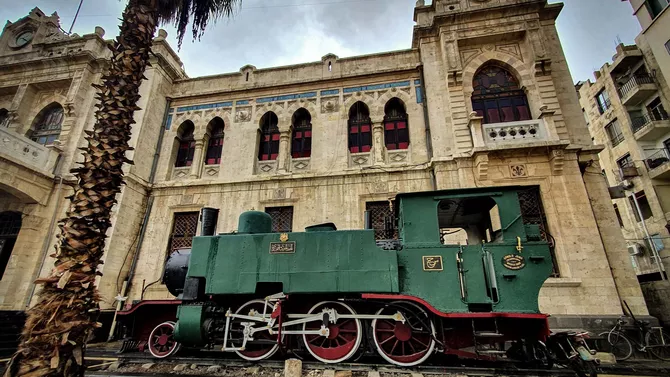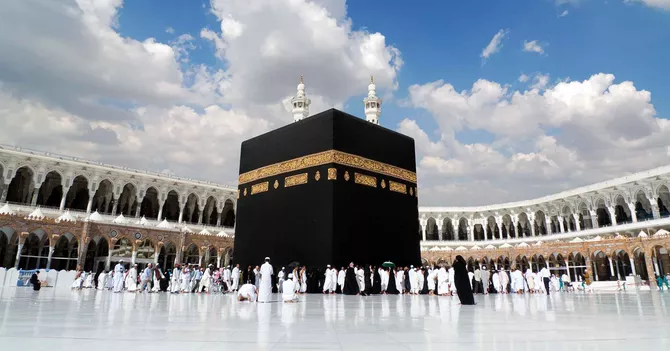
photo: Travel Tramp
A few days ago, the transport ministers of Türkiye, Syria, and Jordan reached an agreement at a meeting in Amman to restore the historic Hejaz Railway, originally built during the reign of Ottoman Sultan Abdul Hamid II. As part of the deal, Ankara committed to supporting the reconstruction of a 30-kilometer section of the railway that lies in Syrian territory and has been heavily damaged. Jordan, in turn, expressed its willingness to contribute to the project by maintaining locomotives and railway tracks. These efforts are expected to eventually restore rail service to Damascus.
Historically, the Hejaz Railway was a major infrastructure project spanning 1,322 kilometers, constructed over an eight-year period (1900-1908) during the Ottoman era. It connected Damascus to Medina and, by that time, was already linked to Istanbul. The railway route passed through the territories of what are now Syria, Lebanon, Israel (including Haifa), Jordan, Palestine, the Asian part of Egypt, and southeastern Türkiye.

photo: Türkiye Today
According to several sources, the primary purpose of the railway was to facilitate Muslim pilgrimage to Mecca - the Hajj, one of the Five Pillars of Islam. At the same time, it also served a strategic function, aimed at strengthening Ottoman control over the empire’s distant provinces. In line with this dual purpose, the railway - the last major engineering project of the Ottoman Empire - also served as a military transport route for Ottoman troops. The Hejaz Railway replaced the ancient caravan route that had previously been used to transport goods between Damascus and Arabia, a journey that used to take nearly four months.
The Hejaz Railway was frequently targeted by sabotage, particularly during the Arab Revolt against Ottoman rule - a movement supported by the British and famously associated with T.E. Lawrence, known as Lawrence of Arabia. These attacks severely disrupted the railway’s operations, effectively disabling it during World War I. As a result, the project never fulfilled its original goal of reaching Mecca; construction halted in Medina, approximately 400 kilometers short of its intended final destination. In light of the recent agreement among Türkiye, Jordan, and Syria to restore the Hejaz Railway, it's worth noting that as early as 2014, reports emerged about Ankara’s intention to revive the project originally launched by Sultan Abdul Hamid II. At the time, plans included a detailed proposal for the railway line to pass through Syria and Jordan, extending into Saudi Arabia and ultimately reaching the Muslim pilgrimage sites.
In 2016, the topic gained further momentum with reports of Ankara’s plans to restore the Hejaz Railway by reviving 3,000 kilometers of track and 9,000 structures dating back to the Ottoman era - even including the opening of a dedicated museum. There was even mention of Türkiye potentially operating a restored steam-powered retro locomotive along the line in the future. In December 2024, the Ministry of Transport announced plans to take initial steps toward restoring rail service to Damascus as the first phase of a broader initiative. Finally, by September of this year, Damascus, Ankara, and Amman had officially reached an agreement to begin the restoration of the Hejaz Railway.

photo: Islamic Relief
In light of these developments, some sources have identified the revival of the spiritual Hajj route as the central aim of the initiative, emphasizing the renewed relevance of unity within the Muslim world. Alongside its cultural and spiritual significance, several experts view one of the project’s key objectives as introducing a new transportation corridor into the global agenda - a move that holds considerable potential in today's increasingly fragmented world.
At the same time, some analysts have been quick to frame the Hejaz Railway restoration initiative within the context of "Neo-Ottomanism", interpreting it as a subtle reflection of Ankara's unspoken intent to reassert the symbolic legacy of the Ottoman era. In contrast, another group of analysts believes that bringing the Hejaz Railway project to life will strengthen regional cooperation and foster greater understanding between the Muslim world’s Turkic and Arab spheres. Given the historical route of the Hejaz Railway passing through Haifa, it is possible that if the "Abraham Accords" are further expanded, the project could become highly relevant and in demand across the entire Middle East and neighboring countries.
In this context, there is also the view that the Hejaz Railway restoration project could be presented to the world - but only if the ongoing violent conflict in the Middle East is successfully contained - as a genuine example of inter-civilizational, intercultural, and interfaith cooperation. Thus, the topic of reviving the Hejaz Railway - even at this early stage of preliminary agreements - has sparked unprecedented interest. It is interesting to see how this initiative will develop moving forward.
Share on social media